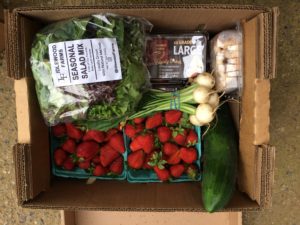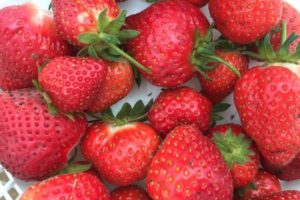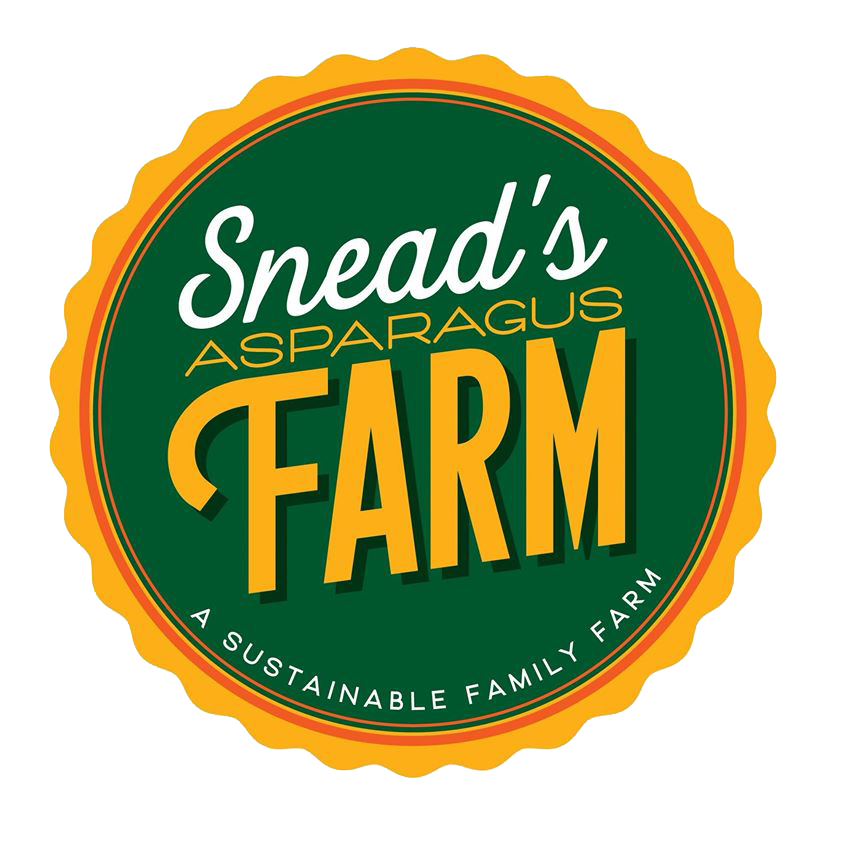 The old adage, “the more things change, the more they stay the same,” applies to where farming has arrived today.
The old adage, “the more things change, the more they stay the same,” applies to where farming has arrived today.
My career in farming started in 1961, when I began marketing eggs and fresh fruits and vegetables that I grew at my family’s farm by going door-to-door in Fredericksburg. My mode of transportation was a bicycle. This lean operation allowed me to sell my products without the overhead of a physical store. It served me well through my high school years—of course, I eventually upgraded my transportation to a station wagon.
During my college years in the 1970s, my business evolved, as I focused on pick-your-own strawberries and selling tomatoes and pumpkins to restaurants and wholesalers. Each year, I would sell 1 acre of strawberries, 4 acres of tomatoes and 2 acres of pumpkins. In those days, customers would pick a large volume of strawberries to freeze or preserve as jam. Today, pick-your-own customers primarily seek entertainment, exercise, or a way to educate children about food’s origins.
By the ‘80s, farmers markets and roadside stands became popular. As time went on, it became harder and harder for these small, family-owned businesses to compete with chains and larger grocery stores. Family farms could not compete with the economies of scale that spawned much larger corporate farms that could access larger equipment, cheaper labor and cheaper fuel to bridge the ever-increasing distance to the population centers where the food was being consumed.
harder for these small, family-owned businesses to compete with chains and larger grocery stores. Family farms could not compete with the economies of scale that spawned much larger corporate farms that could access larger equipment, cheaper labor and cheaper fuel to bridge the ever-increasing distance to the population centers where the food was being consumed.
Around the turn of the century, economies of scale took a giant leap with the advent of globalization. Globalization coincided with the introduction of genetically modified organisms (GMOs) in the commercial farming world. GMOs present the opportunity for crops to be rapidly hybridized for the purpose of holding up for shipping, prolonged storage in coolers, and visual appeal. The older methods of cross-breeding and hybridization—creating what we call “heirloom” varieties—can take up to 20 years. New GMO varieties could be produced in a year or two.
Around 2008, I found myself working in a farming world that looked very different from the one I had entered on my bicycle back in 1960. Chain stores and wholesalers were paying below my cost of production for fruits and vegetables. In turn, farmers markets had to compete with chain store prices. I remember hearing repeatedly, “I can get it cheaper at Giant.”
 In the farming media, I was beginning to hear about a new concept called community-supported agriculture (CSA). With CSAs, farms were essentially allowing customers to purchase a “share” of their produce for the growing season. Farmers would place a set amount of produce items in boxes for each CSA member on a weekly basis, and members would come to the farm to pick up the box. Survival in farming requires a constant willingness to try new things and take risks. Not knowing how it would be received, I started my first CSA by printing up flyers that I handed out to visitors who came to pick pumpkins at my farm in October.
In the farming media, I was beginning to hear about a new concept called community-supported agriculture (CSA). With CSAs, farms were essentially allowing customers to purchase a “share” of their produce for the growing season. Farmers would place a set amount of produce items in boxes for each CSA member on a weekly basis, and members would come to the farm to pick up the box. Survival in farming requires a constant willingness to try new things and take risks. Not knowing how it would be received, I started my first CSA by printing up flyers that I handed out to visitors who came to pick pumpkins at my farm in October.
The CSA attracted me in part because I liked the idea of being able to sell my produce directly to neighbors in my own community, rather than deal with wholesalers constantly trying to undercut me. While the Snead’s Farm CSA has never been priced to afford much of a profit margin on the produce I grow, it allows me to overcome most of the loss by being paid in advance (allowing me to buy seed and fertilizer at a discount), and creating a market for bumper crops that produce more than I can sell from my roadside stand, or to my local restaurant customers.
The CSA has created a rhythm on the farm that reduces waste and maximizes freshness for all of my customers. The produce harvested on weekend days is sold on restaurants and small stores, such as the Fredericksburg Food Co-op, and at my roadside stand. Produce picked early in the week is distributed to CSA customers. In this way, all customers get the freshest produce possible, and delivery costs remain low.
Over the 15 years the Snead’s Farm CSA has operated, I have tailored and tweaked it to stand out as a unique way to support a local family farm. As part of their membership, CSA members and their family get the added benefit of being able to come visit the farm on pickup Wednesdays, play in the creek, see the animals and slide on the Mountain Slides without paying an entry fee. My family and I have enjoyed watching children grow up before our eyes as they come to the farm year after year to enjoy some wholesome outdoor play while picking up food for their families. While Snead’s Farm does not open pick-your-own opportunities to the general public, I have added opportunities for CSA members to pick berries, sugar snap peas, asparagus, sunflowers and other items when crops have been abundant, giving members another weekly experience to look forward to as part of the value of their share.
way to support a local family farm. As part of their membership, CSA members and their family get the added benefit of being able to come visit the farm on pickup Wednesdays, play in the creek, see the animals and slide on the Mountain Slides without paying an entry fee. My family and I have enjoyed watching children grow up before our eyes as they come to the farm year after year to enjoy some wholesome outdoor play while picking up food for their families. While Snead’s Farm does not open pick-your-own opportunities to the general public, I have added opportunities for CSA members to pick berries, sugar snap peas, asparagus, sunflowers and other items when crops have been abundant, giving members another weekly experience to look forward to as part of the value of their share.
As my CSA has grown, I have also extended support to other family-owned farms in our region to source produce for the boxes. I’ve been proud to be able to support small farms such as Canning Farm, Idlewood Farm, Farnham Produce Farm and Braehead Farm, and to provide the high-quality produce from these farms to my CSA members.
In the rush of “big farming,” globalization and GMOs, some dear things got left behind because they didn’t pay. These include:
- A sense of community.
- Heirloom varieties bred for taste and to be picked at peak ripeness for flavor and nutrition.
- Small family farms.
- An understanding of where food comes from.
The COVID-19 pandemic proved to be a turning point. Fuel got expensive and labor was no longer cheap anywhere. Big economies of scale were suddenly less appealing. Because of covid, getting out in the fall became dramatically more popular.
There are times during the CSA season when I can look around my farm in Caroline County and see the best that family farming brings to a community. I see mothers greeting each other and unloading young children about to embark on hours of outdoor play. I see adults trading ideas for recipes as they make their way through the rows of raspberry bushes. And I see all kinds of people making a genuine connection with where their food comes from.
It’s still exceedingly difficult to make it as a small family farm in today’s economy, but as I prepare to launch my 15th CSA season, I am heartened by glimmers I see that take me back to those early days of selling produce off the back of my bicycle. It gives me hope that communities are once again starting to value family farms.
Interested in joining the 2023 Snead’s Farm CSA? Click here for all the details.
